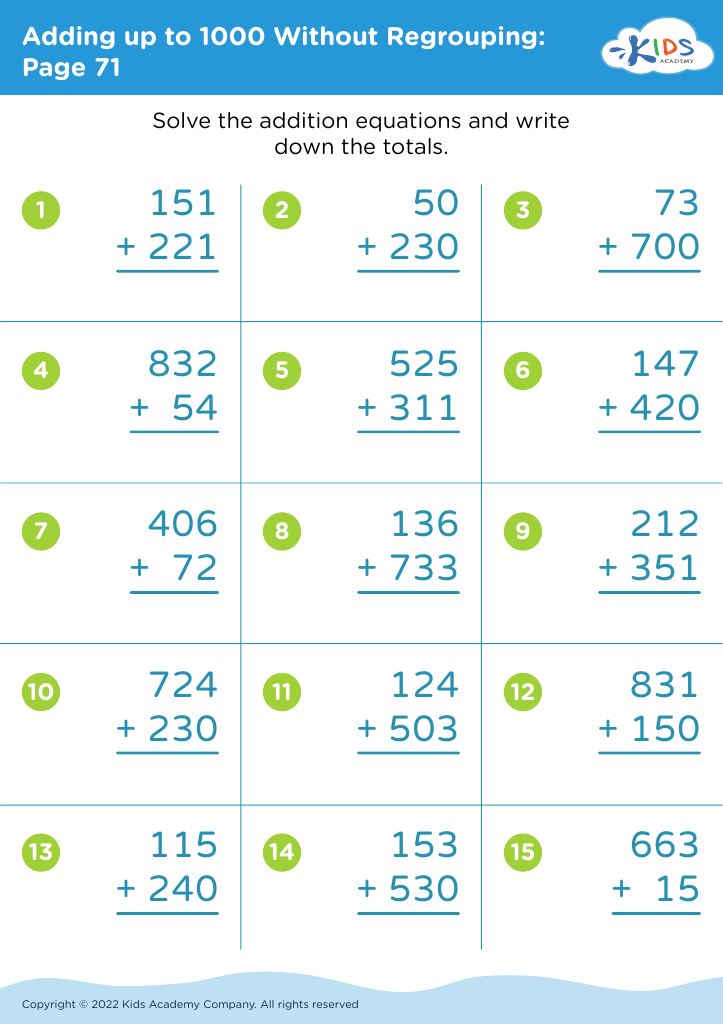Develop reasoning abilities Worksheets for Kids
1 filtered results
-
From - To
Question/Answer
How to train the Develop reasoning abilities skill in Grade 2 students learning about Adding up to 1000 Without Regrouping?
To train Grade 2 students in developing reasoning abilities while adding up to 1000 without regrouping, use visual aids (e.g., number lines, base-ten blocks) to illustrate the concept. Engage them in hands-on activities, like physically grouping items to add. Implement cooperative learning, where students solve problems in pairs or small groups, discussing and reasoning through their thought processes aloud.
Why is the Develop reasoning abilities skill important for Grade 2 students?
Developing reasoning abilities in Grade 2 students is crucial as it enhances their problem-solving skills, critical thinking, and ability to understand complex concepts. It prepares them for more advanced learning, aids in mathematical and scientific understanding, and improves decision-making skills. Early development of reasoning sets a solid foundation for academic success and effective daily life problem-solving.
What does the Develop reasoning abilities skill mean when it comes to Grade 2 Adding up to 1000 Without Regrouping learning?
Developing reasoning abilities in the context of Grade 2 students learning to add up to 1000 without regrouping involves enhancing their capacity to understand and apply logical thinking to solve addition problems. This skill helps them to grasp the concept of adding larger numbers by breaking them down into more manageable parts, thereby improving their computational accuracy and speed.

















